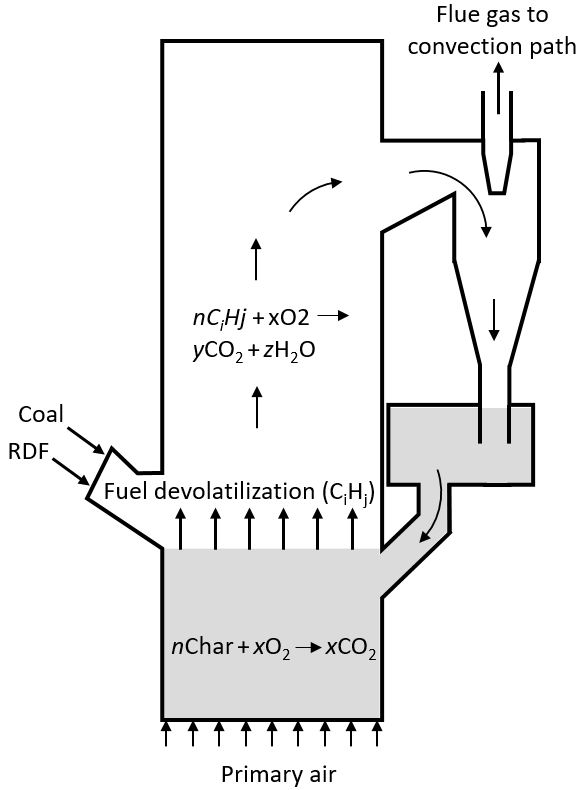
The Insitute of Energy Systems and Technology at TU Darmstadt performs tests with varying co-firing ratios of lignite and waste-derived fuels (RDF) in a 1 MWth CFB plant, using sand as bed material. Starting with 100 % lignite combustion, the fraction of waste in the fuel mixture is increased stepwise until 100 % of waste is reached. After each change in fuel composition, the plant is continuously operated for at least 8 hours until a steady-state condition is reached. After reaching steady-state conditions, different strategies will be tested to decrease the minimum load level.
The flue gas treatment will be carried out in an existing multipollutant flue gas cleaning system downstream of the furnace. The gas concentrations (particularly CO, SO2, NOx and HCl) are monitored after the furnace and after the flue gas cleaning system, so that counteractions can be performed if emissions exceed acceptable values.
A simplified schematic representation of the 1 MWth CFB burner can be seen on the right handside. The solid input materials enter the reactor on the left side. After converting the feedstock to char and volatiles, the components are oxidized in the different regions of the reactor. Bed material and carbon particles that are carried away by the fluidization medium are separated from the gas stream in a cyclone. The gas stream leaves the cyclone through the top while the solid particles fall down through the standpipe to the loop seal, where they re-enter the reactor.
